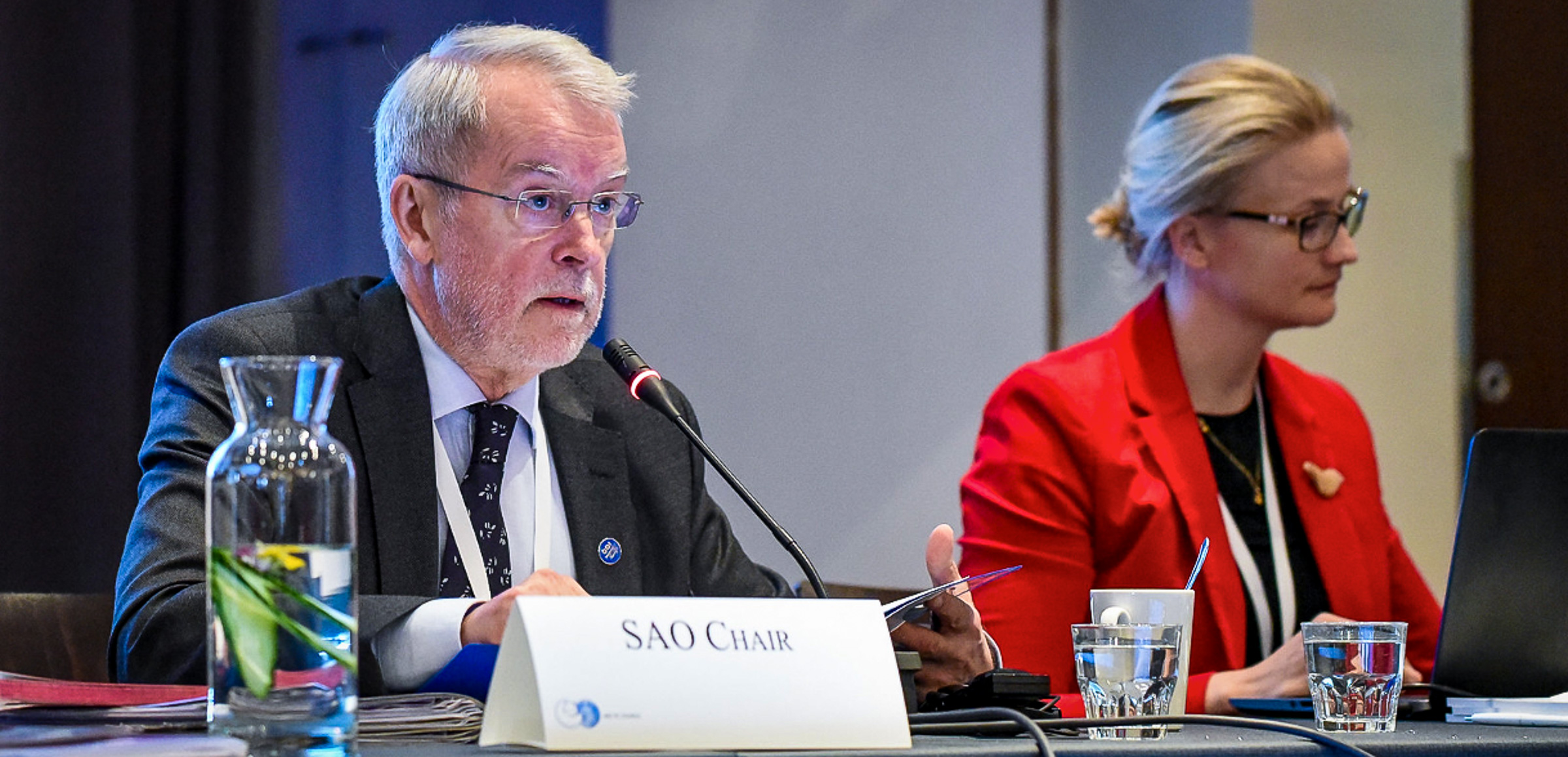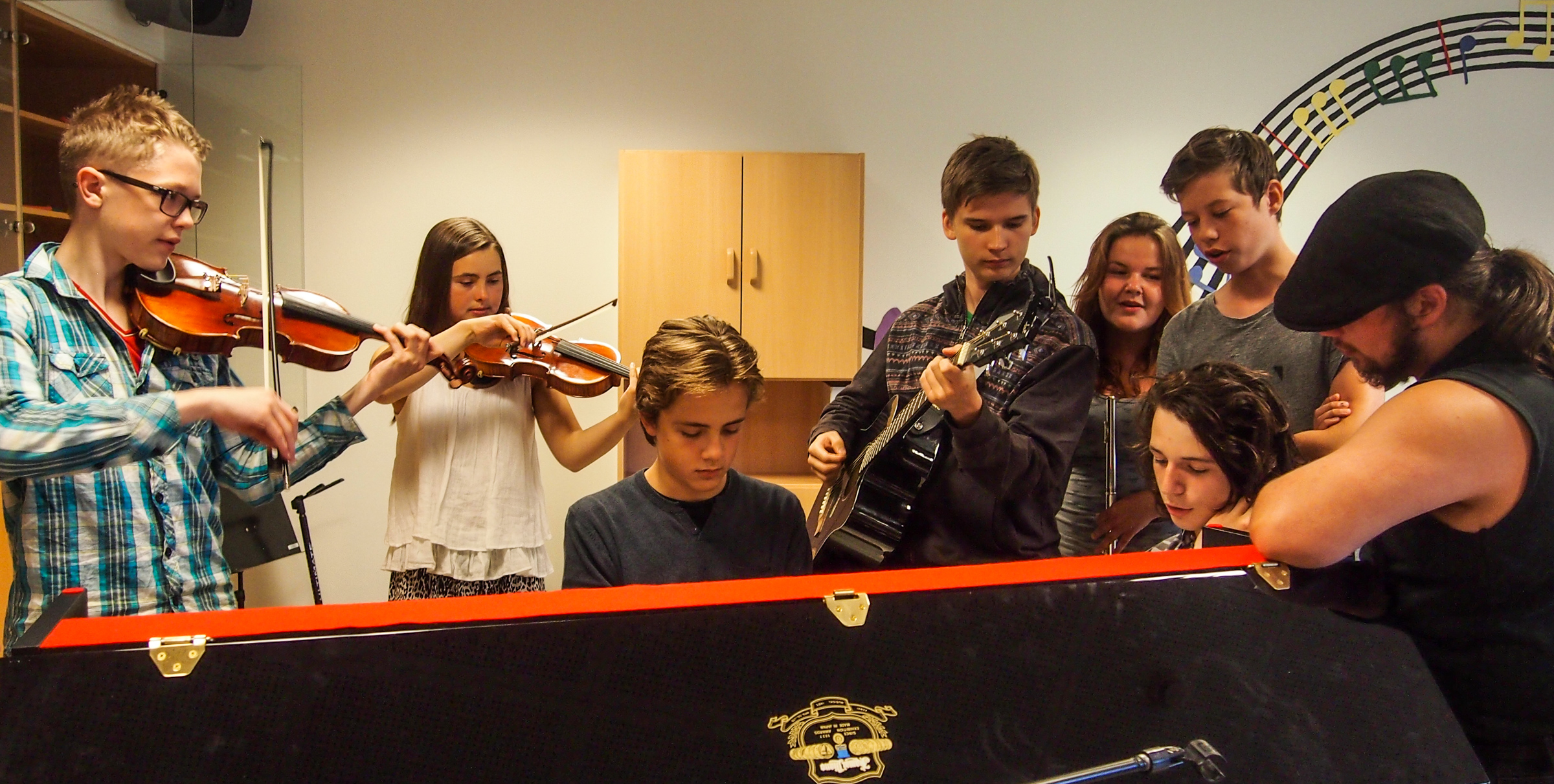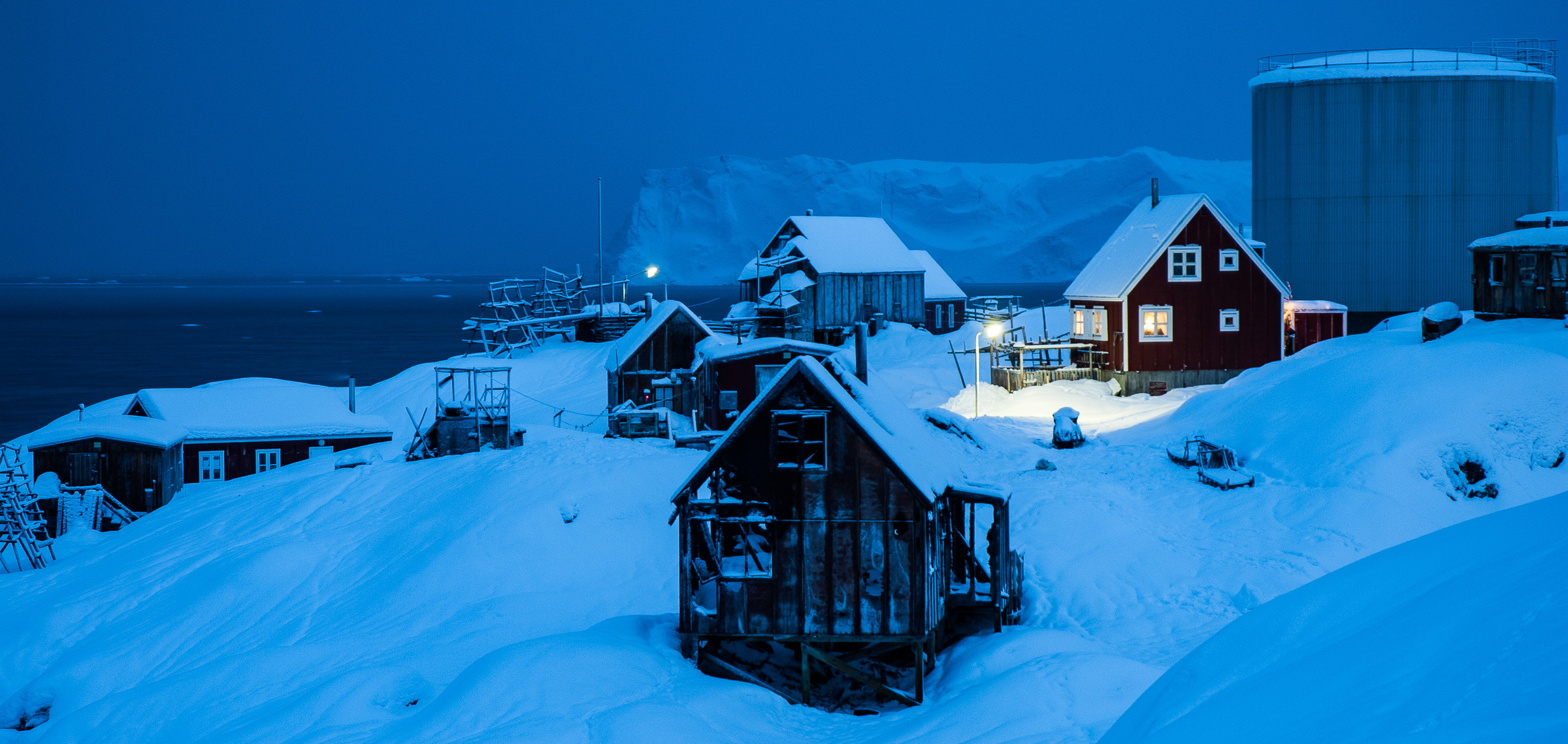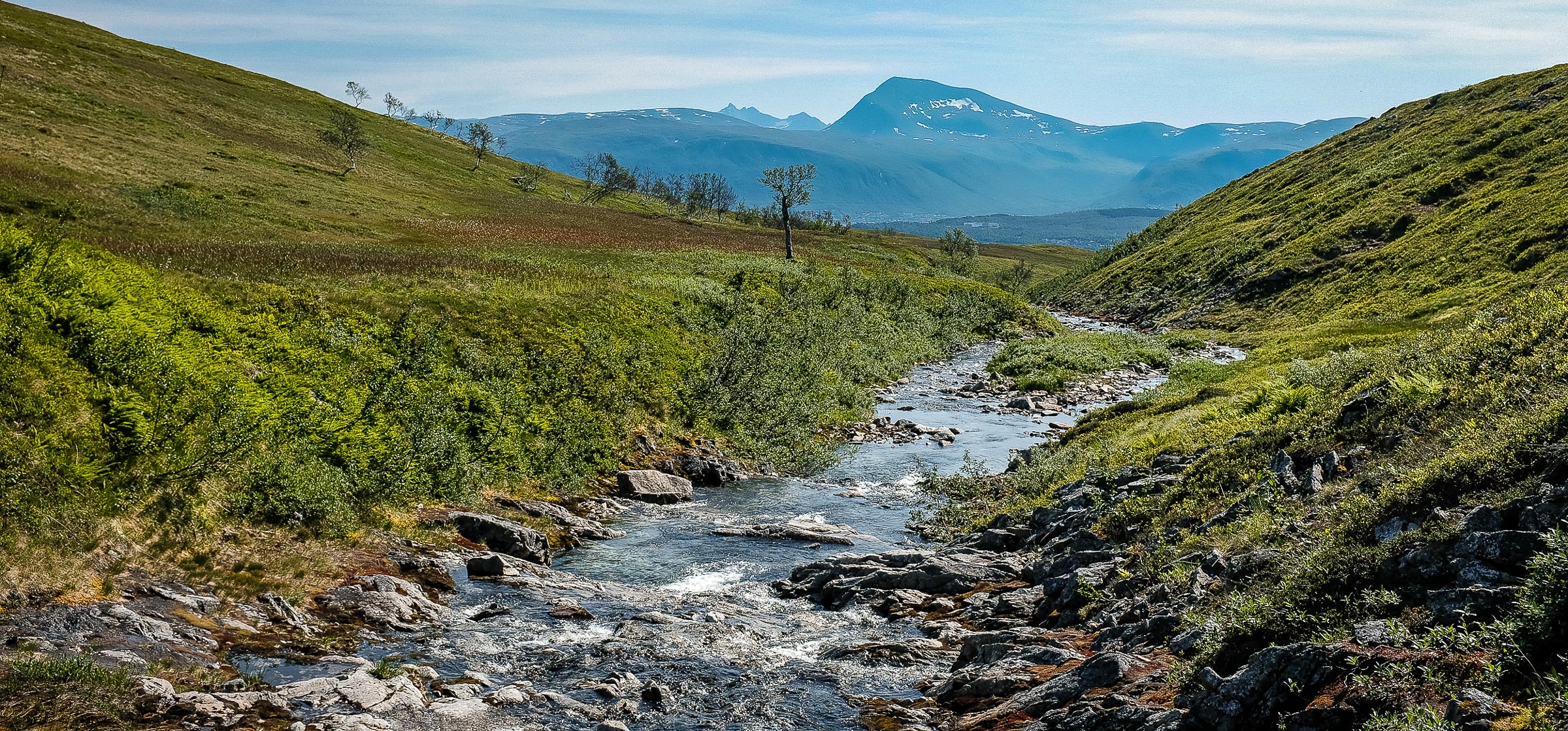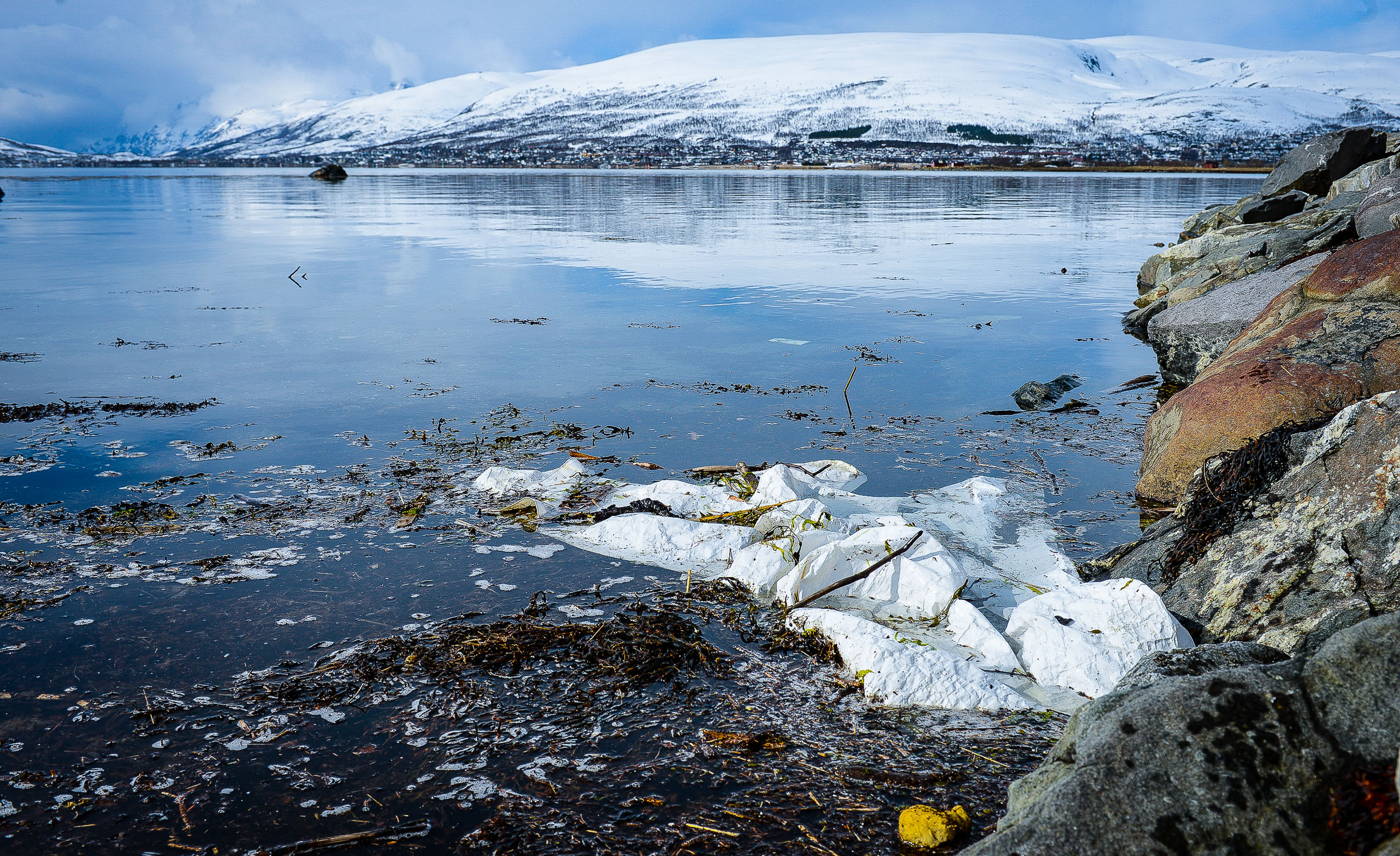Finland Ends A Chairmanship Defined By Common Will For Constructive Arctic Cooperation Despite Increasing Tensions
ARCTIC POLICY
Writer: Linnea Nordström
Photographs: Kristjan Fridriksson, Helge M. Markusson, Mats Moldskred, Linnea Nordström
May 2019
Education, meteorological cooperation, connectivity, and environmental protection are the four priorities defining Finland’s Chairmanship of the Arctic Council for the past two years. The results of multi layered work on these issues and others will be laid out when the Arctic Council meets in Rovaniemi on May 7 for its Ministerial meeting, which marks the end of the Finnish Chairmanship and Iceland takes the lead for the coming two years.
In this retrospective, Linnea Nordström, JONAA’s Editor of Arctic Affairs looks back on some of the progress made during the past two years with Ambassador Aleksi Härkönen, who has chaired the Council meetings during Finland’s Chairmanship. Two years Härkönen says have, despite increasing tensions, been defined by a common will for constructive cooperation in the Arctic.
The Arctic Council’s cycle of work
The Arctic Council is an intergovernmental forum which operates on a two-year cycle, one of the eight member countries take the helm and guide the Council through twice-annual meetings until the Chairmanship period culminates in a Ministerial meeting. Present at the Ministerial meetings are delegations from all the member countries, led by high-level diplomats and policy-makers, such as the Ministers of Foreign Affairs and Secretaries of State, and delegates from the six indigenous Permanent Participant organizations. Representatives of the countries and organizations which have been granted Observer status within the Council also attend.
At the Ministerial meetings, like the one happening in Rovaniemi this week, reports from the six Working Groups and the currently active Task Forces and Expert Groups are released. These products, referred to as deliverables, have traditionally taken the form of detailed scientific assessments, often accompanied by policy-makers’ summaries, which include recommendations for policy changes to help remedy the issues and knowledge gaps identified in the full report. In recent years, the selection of deliverables has expanded to include short videos, overview fact sheets, and even educational toolkits for use in schools.
A picture from a Senior Officials meeting March 2019 in Ruka, Kuusamo, Finland. Flags in front of the countries that make up the Arctic Council and the indigenous organizations that have Permanent Participant status. Photo: Ministry for Foreign Affairs of Finland/Kaisa Sirén.
The Arctic Council does not make policy decisions in the region, but rather suggests policy changes which the member countries can individually choose to implement. The only exception to this are the three legally binding agreements which have been negotiated by Council representatives on search and rescue, oil pollution prevention, and scientific cooperation. A further outline of the Arctic Council, its members, and how it operates is included at the end of the article.
Exploring common solutions
Since spring of 2017 Finland has chaired the Council, and during this time the Finnish team has been both hosting many of the meetings in Finland and leading the policy discussions. Each Chairmanship country has a program of priority themes for their two-year period, and Finland launched into their Chairmanship with an ambitious 17-page program Exploring common solutions, with the four main priority areas of education, meteorological cooperation, connectivity, and environmental protection.
All in all, during the Finnish Chairmanship the Council has worked on more than fifty different projects and initiatives. This is an impressive amount considering the increasingly challenging geopolitical landscape. The Arctic Council has a history of overcoming international tensions for the sake of Arctic cooperation, and Ambassador Härkönen explains that this has been the case also during this Chairmanship period.
Education based on equality for all Arctic inhabitants
It might come as no surprise that Finland, a country where schoolchildren regularly score among the highest in the world in the OECD PISA tests, chose education as one of the priority themes. The educational toolkits notwithstanding, education has not typically been a large part of the Council’s work in the past, since school curricula are a national rather than an international issue.
Still, the Finnish Chairmanship set out to work for fair and equal access to good education opportunities, particularly in remote areas and small communities. The University of the Arctic (UArctic) plays a vital role in this since the network of universities offers mobility programs and helps connect students with study opportunities, both on-campus and online, around the circumpolar Arctic.
“We are talking about crossing the different lines which would allow people to join in on modernizing and globalizing within new economic structures, for example crossing the digital divide. On the other hand, providing good-quality education on the basis of equality to all Arctic inhabitants means that cultural characteristics must be taken into account and minority languages must be part of education” emphasizes Ambassador Härkönen.
A good first step towards making education more inclusive in the Arctic is a set of recommendations on Teacher Education for Diversity and Equality in the Arctic from the Sustainable Development Working Group which will be released in Rovaniemi. These recommendations were developed to assist teachers in sharing best practices on incorporating Indigenous perspectives in teaching practices and providing education in small communities.
Glacier monitoring in Svalbard. JONAA©Helge M. Markussen
Meteorological networks for prediction
As predicted in the IPCC climate reports, and seen in recent years with increased flooding in some parts of the world and severe drought in others, climate change has the capacity to upset local and global weather patterns. Because of this accurate weather reports become even more important to help keep residents safe in the Arctic, and all around the world. One way to improve the accuracy of weather predictions in the short and long-term is to boost capacity for meteorological observations and monitoring, for example by increasing international cooperation in the field.
The Arctic Council is involved in this work in part through collaboration with the World Meteorological Organization (WMO). The WMO has been an Observer to the Arctic Council since 2017, a bond made stronger in March 2018 when a meteorological summit was held back-to-back with a Council meeting in Levi, Finland. Several representatives from national meteorological institutes were invited to speak and to take part in a workshop with the Working Groups explains Ambassador Härkönen.
“This was a was a wonderful example of the interest that there is among the international community. We made quite a bit of progress on cooperation which will improve the observation, research, and meteorological services we will badly need in the future.”
The critical need not just for efficient warning systems, but also for coordinated responses to weather emergencies, is clear as many parts of southern Scandinavia are scorched by unseasonably dry spring weather, sparking wildfires in Sokndal, Norway already in April this year. This is a concerning trend after last year’s dry summer, and a joint effort between several of the Council’s Working Groups is underway to find ways to improve regional cooperation on combating forest fires.
A good first step towards making education more inclusive in the Arctic is a set of recommendations on Teacher Education for Diversity and Equality in the Arctic from the Sustainable Development Working Group which will be released at the Ministerial meeting now in Rovaniemi.
Connecting the Arctic
An important requirement for the success of both education for remote communities and monitoring efforts is the ability to connect and share information with the world. The level of internet connectivity in the Arctic varies per country and region, with nearly universal access in Scandinavia but limited connectivity in Alaska, Northern Canada, and Russia. The investments needed to improve access will likely demand cooperation between the public and private sectors. However, emerging satellite technology shows promise and could potentially cut costs, making connecting the Arctic more achievable according to Ambassador Härkönen.
“The argument has been that it will cost too much per person to improve connectivity, because so few people live in the Arctic. This argument is not so valid anymore since the expenses will go down and the number of people who will need these services will increase.”
Connectivity in the region is important for supporting many aspects of life in the Arctic such as business, research, tourism, education and health services. A new report set for release in Rovaniemi on Improving Connectivity in the Arctic by the Task Force on Improved Connectivity in the Arctic examines what the public-private partnerships could look like and how the needs of these very different user groups can be met.
Environmental protection
One of the central tenets of the Arctic Council has always been environmental protection and the Finnish Chairmanship brought this theme back into the spotlight again. Although it might seem obvious that almost all the Council’s work includes environmental protection in some form, Ambassador Härkönen points out that it is important to highlight the issue now because of the urgency of climate change.
“When we say environment we must say the other word, which is climate and climate change. These go together and make this priority even more pressing than it was. Perhaps at one point environmental protection was to look into the past, but now we have to look into the future with climate change. We need to think not just about the coming years, but about the coming decades.”
Climate change and how it can impact future generations is very much in the public eye currently, thanks to the new youth movement initiated by Swedish teenager Greta Thunberg. The school strike for climate has taken the world by storm, with protests popping up all around the globe each Friday as students risk academic punishment by skipping classes, taking to the streets, and demanding action on climate change. These protests have really resonated with Ambassador Härkönen.
“What we are seeing is really something eye-catching. When have we had a political youth movement like this? Not in half a century. The difference between the so-called youth revolt of the 1960s and now is that this is not a youth revolt against any other generation, but this is a youth revolt where other generations can join.”
A whole range of the deliverables which will be released in Rovaniemi address the topic of climate change, from tracking the melting ice and snow in the region in the Arctic Climate Change Update 2019 by the Arctic Monitoring and Assessment Programme Working Group to cutting down on emissions of Black Carbon, or soot, a driver of climate change in the Summary of Progress and Recommendations from the Expert Group on Black Carbon and Methane.
Protecting the vulnerable environment in the polar regions is highlighted in the comprehensive status report on freshwater ecosystems State of the Arctic Freshwater Biodiversity Report by the Conservation of Arctic Flora and Fauna Working Group, and in a series of information videos for local communities on how to prepare to respond to an oil pollution incident Awareness videos for small communities on oil pollution risks, impacts and response from the Emergency Prevention, Preparedness and Response Working Group.
“When we say environment we must say the other word, which is climate and climate change. These go together and make this priority even more pressing than it was. Perhaps at one point environmental protection was to look into the past, but now we have to look into the future with climate change. We need to think not just about the coming years, but about the coming decades.”
Plastic pollution is an important theme for the Arctic Council
Another serious threat to Arctic wildlife is plastic, which is washing up on even the most remote shores, ensnaring marine mammals, and filling their stomachs. A Desktop Study on Marine Litter, including microplastics in the Arctic by the Protection of the Arctic Marine Environment Working Group set for release in Rovaniemi is the first phase of a project which will continue into the next Chairmanship period as plastic pollution becomes an important theme for the Council.
Since the plastic which eventually reaches the oceans comes from many sources also outside the Arctic, it is important to involve non-Arctic countries at an early stage in the work. This collaboration got off to a promising start during a first discussion about marine litter in March 2019 in Ruka, Finland.
“Observer States and Organizations joined in this discussion with great enthusiasm, they have ideas and some of them already have projects which they are beginning and they are willing to contribute to Arctic Council work on this” explains Ambassador Härkönen.
The Arctic Council Gavel which is now handed over to Iceland to keep as the country chairs the Arctic Council for the coming two years. JONAA©Arctic Council Secretariat / Linnea Nordström
Consensus despite tensions
All in all, during the Finnish Chairmanship the Council has worked on more than fifty different projects and initiatives. This is an impressive amount considering the increasingly challenging geopolitical landscape. The Arctic Council has a history of overcoming international tensions for the sake of Arctic cooperation, and Ambassador Härkönen explains that this has been the case also during this Chairmanship period.
“When Finland was preparing for the Chairmanship the international situation was quite tense. It is not easier now, but still it has not been reflected in Arctic cooperation. In spite of increasing tensions we have had a Chairmanship which has been conducted under the common will to continue constructive cooperation.”
In addition to the official release of the deliverables, a formal Declaration is signed by the Arctic Ministers at the Ministerial. The Declaration is a mixture of acknowledgments of the progress made, and goals for the future. After two years of rigorous scientific work, and hard-earned consensus, the gavel will be handed over to Iceland to navigate the ship on into the future. ▢
Linnea Nordström is one of JONAA’s two Editors of Arctic Affairs, who both writes and photographs regularly for our Arctic and North Atlantic media. Sharing Finland and the United States as her home countries, Linnea has lived since 2009 in Tromsø, Northern Norway where she has worked at the Arctic Council Secretariat and now at the University of Tromsø. She is a biologist, journalist, and web designer by trade and an avid environmentalist with a deep interest in communicating Arctic science, biodiversity, and cultural events. Linnea’s academic background includes a BSc in Ecology and Evolutionary Biology and a MSc in Science Communication.
The Arctic Council in brief
The Arctic Council was founded in 1996 through the Ottawa Declaration as an intergovernmental forum for the eight Arctic states: Canada, Denmark (including Greenland and the Faroe Islands), Finland, Iceland, Norway, Russia, Sweden, and the United States. The Council’s main mandate is to:
“Provide a means for promoting cooperation, coordination and interaction among the Arctic States, with the involvement of the Arctic indigenous communities and other Arctic inhabitants on common Arctic issues, in particular issues of sustainable development and environmental protection in the Arctic.”
— Ottawa Declaration 1996
One unique feature of the Arctic Council is the active participation of indigenous peoples’ organizations. In addition to the eight countries, six indigenous NGOs are Permanent Participants and also attend the Council meetings at all levels.
The Permanent Participants include: the Aleut International Association, the Arctic Athabaskan Council, Gwich’in Council International, Inuit Circumpolar Council, the Russian Association of Indigenous Peoples of the North, and the Saami Council.
The Council meets twice a year at the ambassador level, and every other year the Ministers of Foreign Affairs meet and sign a Declaration on the completed work and outline future priorities. The Arctic Council is chaired for periods of two years by one of the eight countries. The order is fixed and the Chairmanship rotation is Canada, United States, Finland, Iceland, Russia, Norway, Denmark, and Sweden.
Work in the Council is largely undertaken in the six permanent Working Groups:
ACAP, Arctic Contaminants Action Program
AMAP, Arctic Monitoring and Assessment Programme
CAFF, Conservation of Arctic Flora and Fauna
EPPR, Emergency Prevention, Preparedness and Response
PAME, Protection of the Arctic Marine Environment
SDWG, Sustainable Development Working Group
The Working Groups produce scientific reports and assessments on topics which fall within their thematic mandates by compiling information from their national research institutions. The scientific data in the reports is frequently enhanced with knowledge contributed by the indigenous representatives. The scientific reports are often accompanied by summary reports with suggested policy recommendations to address issues discovered through the scientific work.
In recent years, the Council has also begun to employ short-term Task Forces and Expert Groups to work on specific tasks. Several of these Task Forces have been engaged to negotiate legally binding agreements. So far, the Arctic Council has signed three legally binding agreements on: Search and rescue (2011), Cooperation on oil pollution preparedness and response (2013), and Enhancing scientific cooperation (2017).
The Arctic Council also has a network of Observer countries and organizations. The Observers are particularly active at the Working Group level, where many of them contribute financially or with expertise to projects. Currently the Council has 13 non-Arctic Observer countries and 25 Observer organizations as can be seen here on the Arctic Council’s website. ▢


